Dong S Kim MD
(Chairman, Peaceful Unification Advisory Council, OCSD Chapter)
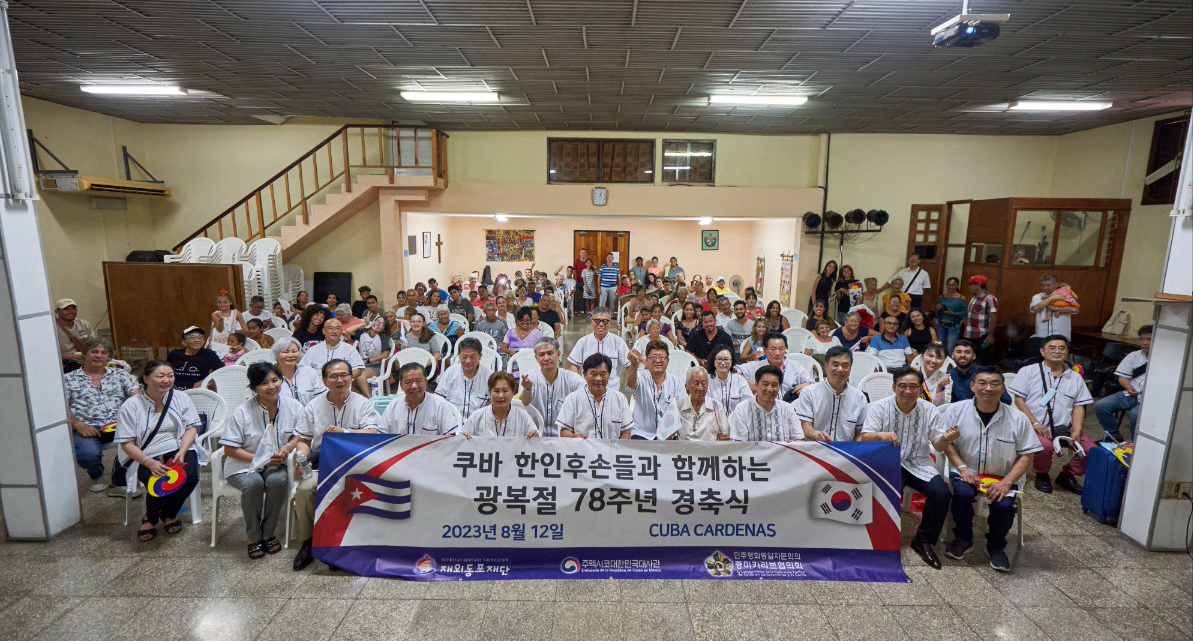
Presidents of the 12 regional councils of the Americas gathered in Cuba. It was because we wanted to hold the 3rd quarter management meeting in the Americas with the descendants of Koreans in Cuba as completing the 20th Pyeongtong. For this meeting, which will be the last event in the Americas of the 20th term, Acting Vice Chairman Park Yo-han of the Americas region, President Park Rae-gon of the Central American and Caribbean Council, and executives prepared early and conducted the event.
After gathering in Havana on August 11th, we rode a 34-seat bus for about two and a half hours and undressed at Melia Las Americas in Varadero, a resort town. I didn't know it at first as I arrived late at night, but this hotel built in front of the beach was quite large and modern. Our party, who had been sweating profusely in the scorching heat after landing at the Havana airport, exhaled a sigh of relief as they undressed in an air-conditioned hotel room.
On the morning of August 12th, we went to Cardenas Church, about 30 minutes away. There were already many Cuban descendants of Koreans and Cubans attending Korean schools. They gathered to celebrate Liberation Day with us, and there seemed to be nearly 250 people.

The history of Koreans in Cuba begins in Mexico. About 300 first-generation Korean immigrants who worked hard in Mexico's Yucatan Peninsula cross to Cuba by boat after hearing rumors that Cuba is easier to work in. This was March 25, 1921, 16 years after moving to Mexico. Unfortunately, however, the price of sugar, which had been equal to the price of gold, fell sharply around this time, and jobs in sugar cane farms, which had been booming since the 1880s, were lost. And as the Henecan farm, which is used as a material for ropes used in ships, developed in Cuba, Korean immigrants came to work at the Henecan farm.
This is the second year since the 3.1 Movement took place in Korea. While doing hard labor, they collected money little by little and sent independence funds to the Provisional Government in Shanghai, China. Im Cheon-taek was an important Korean leader at the time. He was a first-generation Korean immigrant to Cuba, but he studied hard and became the center of Korean immigrants. Coincidentally, Martha, the daughter of Im Cheon-taek, an independence activist, also participated in the Liberation Day event on this day. She said that there were times when she lost her identity while living in Cuba so long, but now she finds herself again because of the Koreans who visit her from time to time.

She looked like she was approaching 90, and she didn't even speak Korean. However, she handed over a book she had published called “Koreans in Cuba” (Coreanos en Cuba) to President Park Rae-gon as a gift. About 1,000 Korean descendants currently live in Cuba, and the largest number of them live in Cardenas.
It is said that The event was also attended by Korean descendants and Cuban students attending Cardenas Korean School, and the flute they played was very impressive.
We delivered the gifts prepared by the Mexican council, and also delivered the gifts prepared by each council. While preparing for my visit to Cuba, I was told that the most necessary things for Koreans in Cuba were the necessities of life, so I prepared soap, toothpaste, toothbrush, and some medicines and food as gifts.
At the Liberation Day event, we chanted “Long live the Republic of Korea” and “Viva Cuba” together, waving the national flag, and enjoyed Cuban cultural events. Our group celebrated the 78th anniversary of Liberation Day by sharing lunch prepared with care.
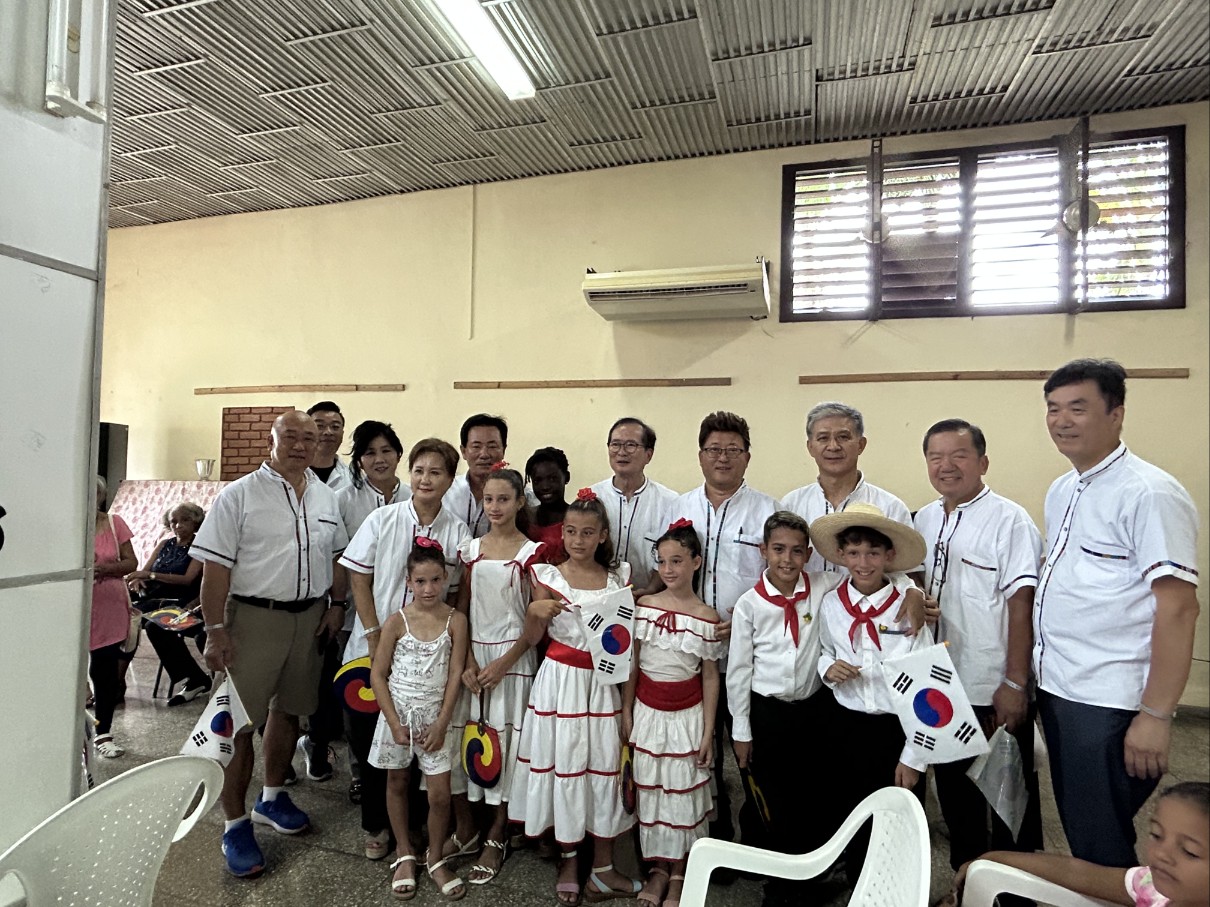
During this visit, we wanted to visit Matanzas El Bolo, where Koreans first arrived in Cuba, but it was too difficult to visit, so we couldn't visit. Currently, only a memorial stone remains. The party returned to the hotel and immediately held the last 20th America Regional Steering Committee. We introduced each other our current situation and shared our impressions of the Liberation Day event that was held that day.
The next day, our group went out to sea. We moved to a Catamaran about 40 minutes away, hugged dolphins, caught lobsters and ate instant dishes. We also enjoyed snorkeling and had a great day. Cuba is an island country in the Caribbean, and it was hot and sweaty most of the day. It was hotter than the summer heat in Korea, but it was the best feeling when I threw myself into the sea. The sea temperature was perfect for swimming.
On the 14th of August, our group boarded a bus from Varadero and headed for Havana. In the bus, tour guide Reynaldo explained the history of Cuba in detail. After Columbus discovered Cuba in 1492, Spain came in and slaughtered all the native Indians, and brought black people from Africa as slaves to work. Since then, it has been said that those who were born as mixed-race children with whites are now mainstream Cubans.

Afterwards, the United States won the war with Spain in 1898 and lived almost like an American colony. Then, socialist revolutionaries grew in Cuba, and eventually, in 1959, the process of Fidel Castro taking power, and the conflict with the United States, it went through a nuclear crisis during the Kennedy presidency. He explained in detail the process of becoming a Cuban.
In 2015, when President Obama established diplomatic relations with the United States again after over 50 years, Cuba wanted to achieve economic revival for a while, but the relationship deteriorated again by President Trump in 2016. It is said that the Cuban economy suffered a lot from the Covid pandemic.
On the way to Havana, we visited Hemingway's old house in Finca Bihia. The house where Hemingway once lived was now a museum and was receiving visitors. Our party toured this house and also toured the fishing village of Kojimar, which became the background of the novel 'The Old Man and the Sea'. The museum also exhibited a boat that Hemingway used for fishing at the time.
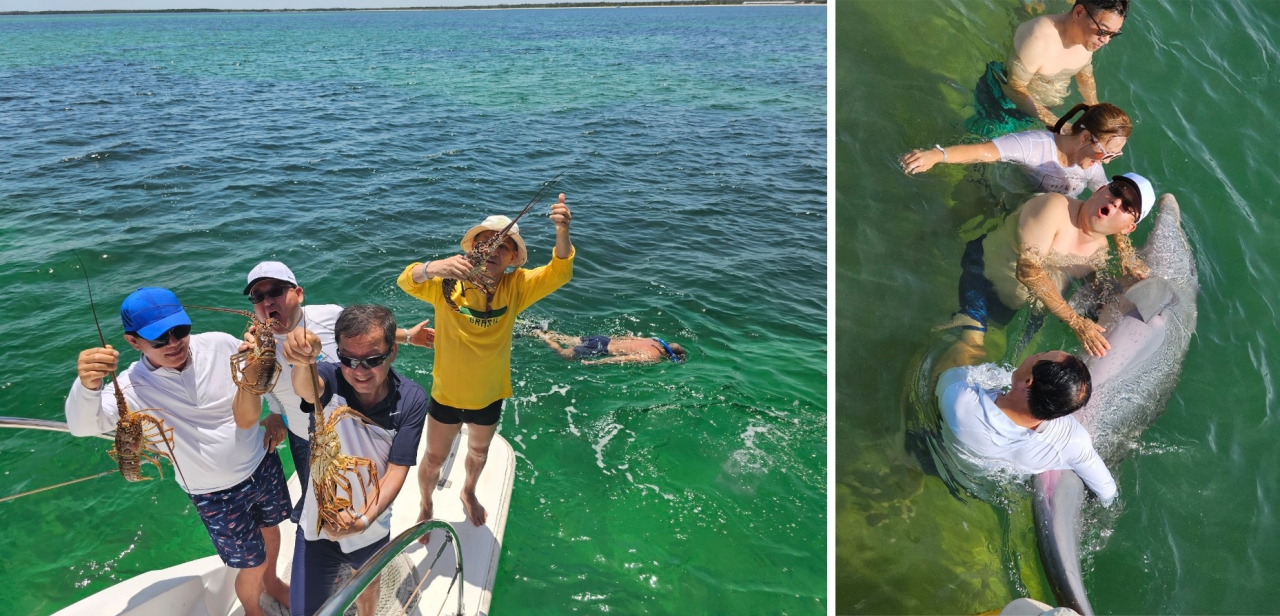
Hemingway liked alcohol, women, fishing and hunting, wrote a lot, and lived a luxurious life. Looking back on his life, I was temporarily absorbed the meaning of life in sentimentality.
Our group entered Havana and had lunch at San Critobal Restaurant, where President Obama had a meal and 24 presidents over the past 12 years had eaten there.
Cuba has quite a few good hotels due to the Cuban government's willingness to expand tourism. Afterwards, we went on a tour of Havana's Old Town and experienced more of Cuba's history by walking through Plaza de Armas, San Francisco Plaza, Vieja Plaza, and Cadedral Square, which were built during the Spanish colonial era.
We also went to Ambos Mundos, the hotel where Hemingway stayed for a long time, and the floridita bar, which means little Florida. It was full of young people and the live music was pleasing to the ears. In fact, you can often see reggae music performed in many places in Cuba. in a communist country It made me feel the passion of how much they love art.
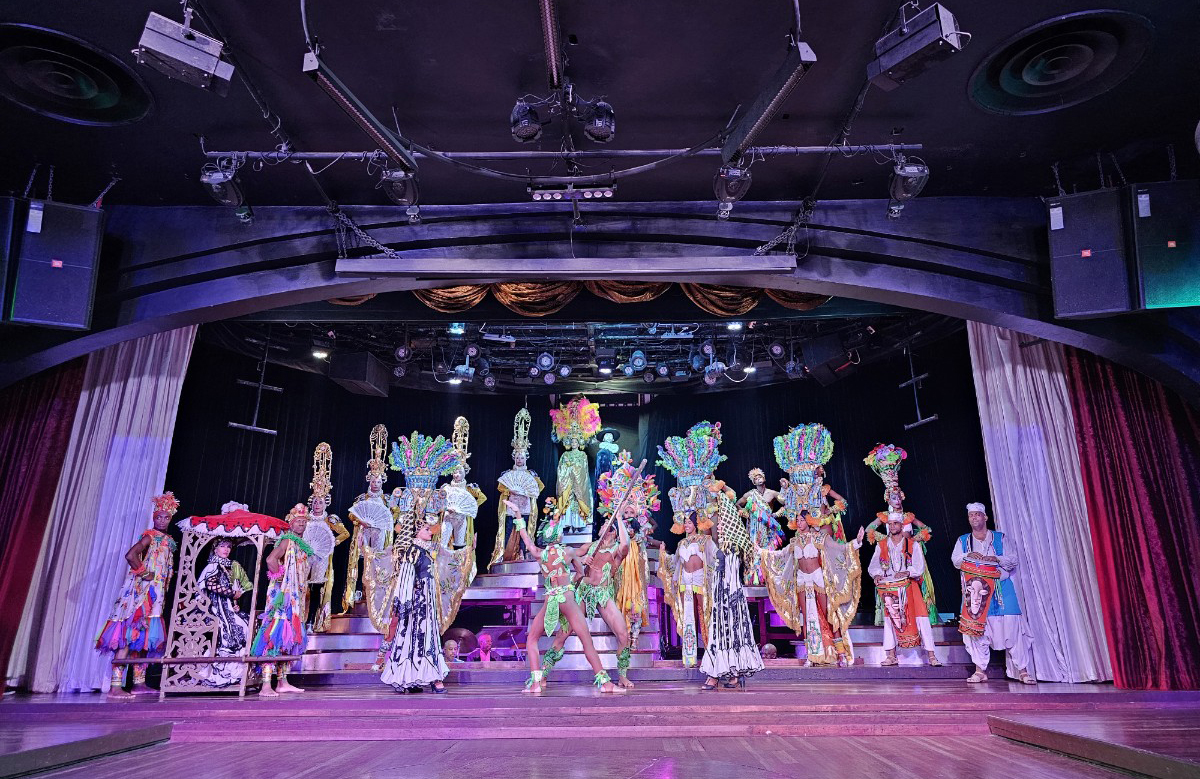
Cuba has a land area similar to that of South Korea, but it has a population of 11.5 million, and about 2 million live in Havana. South Korea's population is 4.5 times larger than Cuba's.
The next morning was the 78th anniversary of Liberation Day. Our party went through Centro Havana to Revolution Square in 7 old American Ford Pontiac convertibles and 1 van made in the 1920s and 1930s. In the Revolution Square, the Revolution Tower, the Communist Party headquarters building, and a building with a large relief of Che Guevara stood out. Although Che Guevara could have lived easily and comfortably, he spent his entire life traveling not only to Cuba but also to several countries in South America and the African Congo to complete a revolution for the people.
When I visited Argentina last year, I also heard about Che Guevara, so I was even more interested. He was originally born in Argentina and was a doctor who graduated from the Medical University of Buenos Aires, but became interested in socialism while touring all over South America on a motorcycle with his friend. He was attracted to the socialist revolution because he saw the hardships of many workers and people and the distribution of wealth to a limited number of aristocrats.
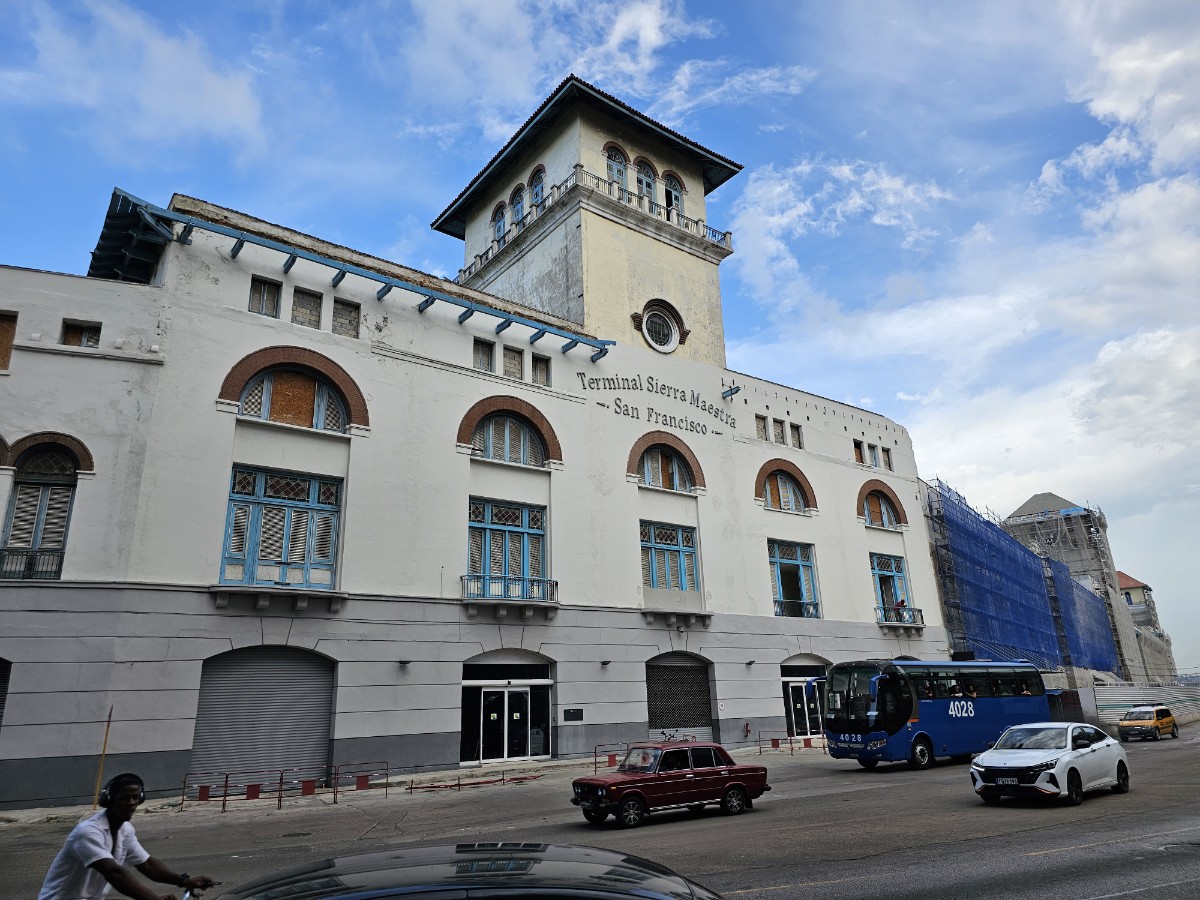
Later, when he was evacuating to Mexico, he met Fidel Castro, who happened to be living in Mexico as a refugee in Cuba, and became a revolutionary comrade overnight. After that, he joined the Cuban Revolution with Fidel Castro under the conviction that people's rights should be won even by force. In 1961, when the Cuban Revolution was heading, he received Cuban citizenship and served as the first Minister of Industry and Bank Governor. But in 1965 he broke up with Fidel Castro and left Cuba.
He was only 39 years old when he was captured and killed by government forces while participating in guerrilla warfare in Guatemala and guerrilla warfare in Bolivia. His conviction and passion for the turbulent revolution made him a hero after his death. Even now, there are many young people in Cuba and other South American countries who regard him as a hero. I bought a hat that Che Guevara liked to wear as a souvenir and wore it on the streets of downtown Havana.
As an official event in Havana, our group visited the Havana Korean Cultural Center and Korean Language School. The place was cramped and hot. However, when I heard that the descendants of our ancestors, who immigrated to Cuba 102 years ago, teach Korean five days a week and hold Korean cultural events to preserve Korean culture, I realized with my own eyes that the roots of Korea will not disappear anywhere. Although it was a poor environment, we gave 170 local Cuban students about 3,500 dollars worth of goods and talked to each other in poor Korean, making them feel like family.
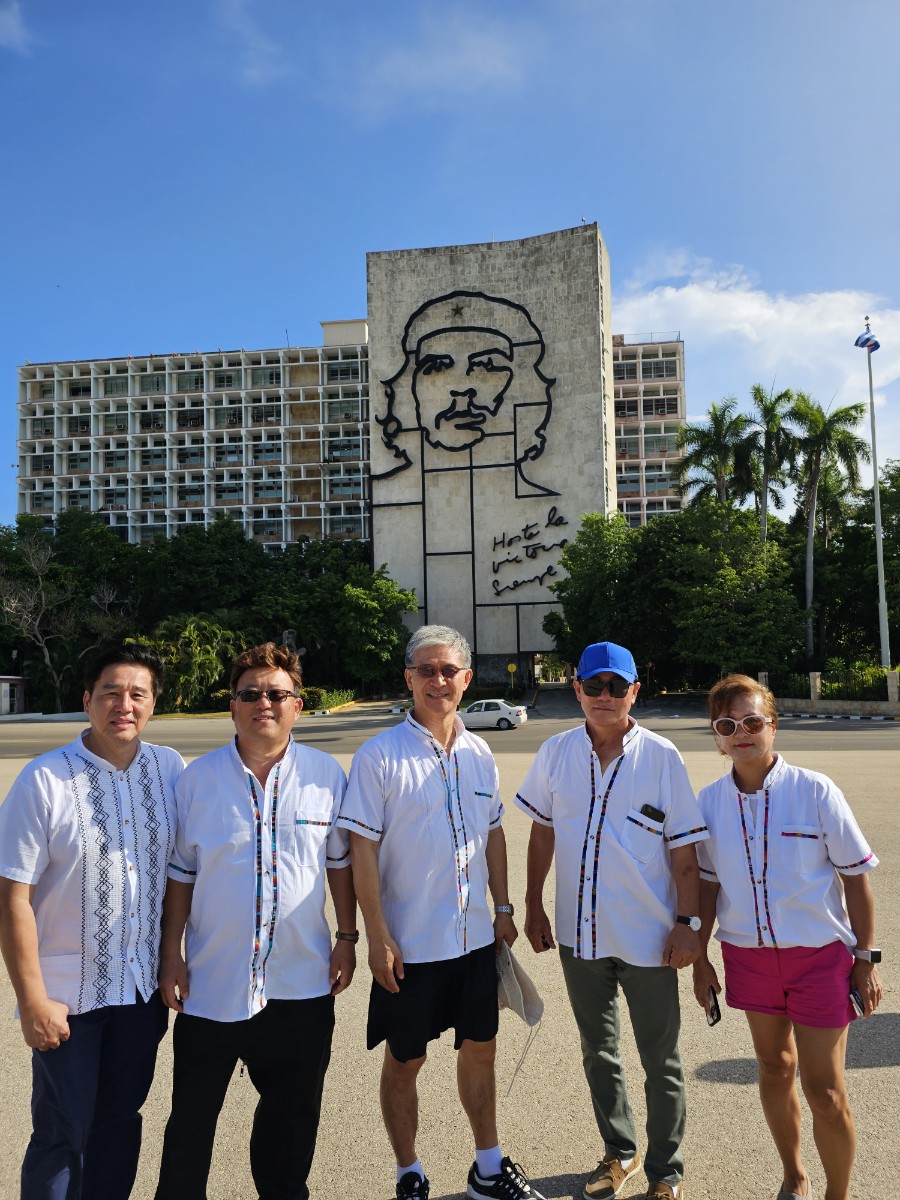
When the Korean Cultural Center and Korean Language School opened in Cuba in 2014, the rent was $3,000. The Overseas Koreans Foundation and the Central American and Caribbean Council 50% each covered the rent, and the burden of the Central American and Caribbean Council was gradually reduced. In 2022, when the Korean Cultural Center and Korean language school were relocated, the rent was reduced to $2,000, and the Office of Overseas Koreans is currently supporting the entire rent.
The Central American and Caribbean Council is supporting the relocation and remodeling costs, but there is no auditorium to gather together yet, so it is necessary to expand it. Ho-hyeon Jeong, principal of the Korean Cultural Center and Korean Language School in Cuba, said that she wanted to build an auditorium and a K-Pop center by adding roofs and lighting to the yard in front of the classrooms, but she was unable to do so due to financial problems. In response, the chairman of the council and the advisory committee members agreed to help little by little.
On this day, Koo Eun-hee, a member of the standing committee from San Francisco, explained the Jikji Heart Sutra in Korea and gave a lecture on Korean teaching methods. In the afternoon, guided by Moon Yun-mi, a Cuban advisory member who also works as a Cuban consular officer, we visited the Casa de Fuster, which is like an art museum called the Gaudí of Cuba, and also visited the Museo de Ron. Cuba was the birth place of making rum out of the sugar canes in early 1900.
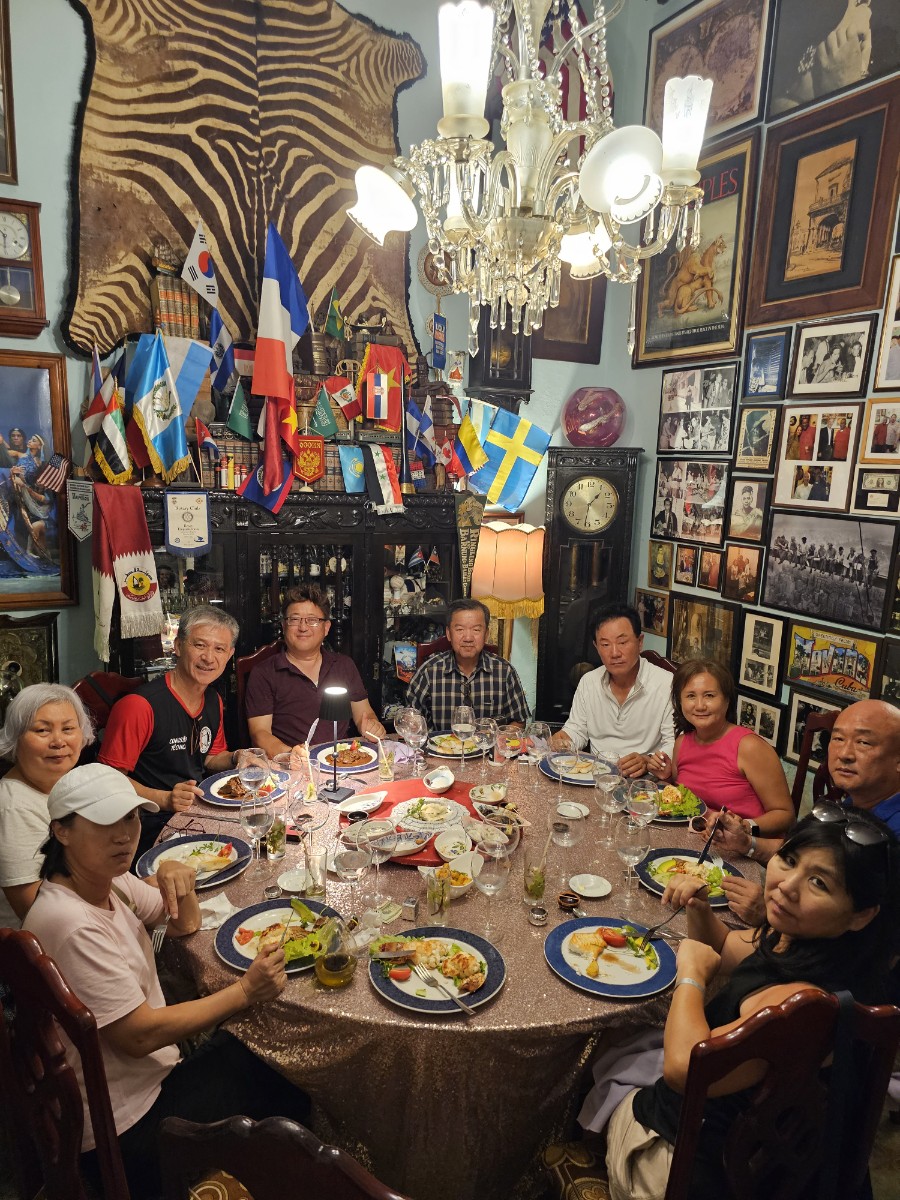
For dinner, Commissioner Moon personally invited us to her house, so we were treated to a wonderful dinner while we were also able to experience the Cubans live in our eyes. In Cuba, inviting outsiders to your home for a meal didn't seem so easy.
During our 6-day visit to Cuba, our group talked a lot. In particular, on August 14, 15 Korean descendents were invited to a dinner in Havana. Antonio Kim, a representative of Cuban Korean descent, and now Grandma Marta Im also participated in the dinner. At last night, we went to the Cuban National Hotel Parisien Cabaret and enjoyed the Habana de Fiesta show, which expressed the history of Cuba through dance and music.
We left Cuba with a sad heart, promising that our Korean descendants in Cuba would get along well and meet again and prayed God's special blessings and guide for them.


